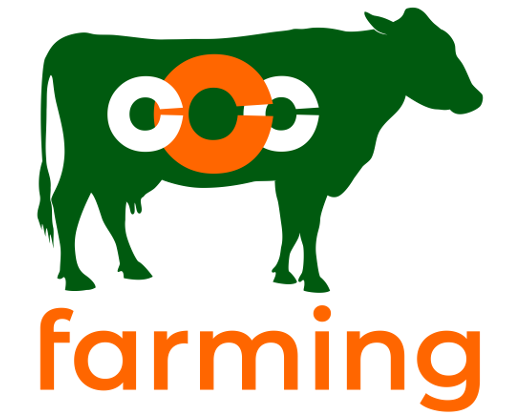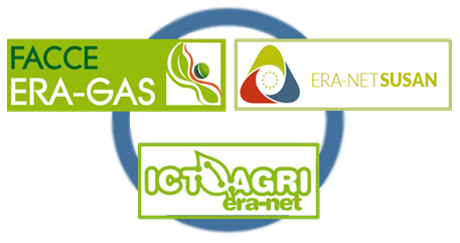MINUTES OF CCCFARMING SKYPE MEETING
19TH OF FEBRUARY, 2021
Present: Bob Rees; Lena.Fehmer; Valentina Becciolini; Diāna Ruska; Lorenzo Leso; Violeta Juškienė; Paul Hargreaves; Kaspars Naglis-Liepa; Verge Xavier; Niklas Sölzer; Paul Galama; Arnis Lenerts; Adam Cieślak; Malgorzata Szumacher; (professor Sven Koenig, Nadege Edouard, Vera Eory and Marion de Vries excused)
- Agenda:
- 1.Concept minutes of CCCfarming meeting of 14 January 2021 are approved; one correction is made: the EAAP meeting will be in Florence in 2024 and not in 2023. EAAP 2023 will be in Lyon, France.
- 2.Announcement
- - CCCfarming partners are invited to submit abstracts to the EAAP FreeWalk seminar in Davos, late August 2021; abstract submission till March 1. Especially Central- and Eastern European countries are underrepresented.
- - A webinar about “Vision on reducing emissions on dairy farm level” will be organized on Friday 16 April 2021 at 13.00-15.30 hour. Nadege Edouard, Sven Koenig, Bob Rees, Peter Groot Koerkamp and Diana Ruska will speak.
- 3. WP1.1 + 1.3: Overview field study farms. Valentina presents an example of the proposed farm overview. A report will be prepared with all farms included. It would be useful to have this overview on the website. Then the farmer has to agree. The Polish partner showed their 8 farms in a colorful PowerPoint. The group exists of a large variety of farms. Further is explained that the farms’ excel overview will be extended in the course of the project with interesting data from other questionnaires, like the kitchen table questionnaire from WP1.6 and the Farm inquiry from WP1.5.
- 4. WP1.5: Measuring emissions with simplified method – farm visits
- For measuring emissions during next farm visits a demonstration video and a guide are available, developed by IDELE and INRAE. Moreover, each partner is requested to fill in the farm inquiry. Emission measurements data and data from the farm inquiry will be inputted in an excel calculation sheet. This sheet is still in development by INRAE and IDELE. The sheet will automatically calculate emission indicators.
- Still some remarks about the guide were made:
- - The 4 measurements take place in the 4 seasons: winter (December –February); spring (March-May); summer: June-August; fall (September-November). When the COVID situation blocks visiting the farms this winter season, then that visit will take place next winter.
- - On page 3 of guide is written: “If other animal categories are well represented then circulate (walk) where all animals are”.
- Note: When the main building / barn has more than 250 cows, and the cows are housed in different pens, then it is the best to fill two air bags within the main building. This may also be done with less cows, but when a lot of young stock is housed in the building, especially when the cattle are divided on both sides of the feeding corridor. In these cases still only one air bag can be used outside the building. When walking around the building, avoid manure / slurry storages and other cattle barns close to the main building.
- - The Netherlands team experienced that the thermohygrometer - Volcraft DL-121TH - to measure the temperature and humidity in the barn did not work. Now they plan to use the Escort datalogger. The temperature / humidity should be measured each 30 seconds at 2 meter height.
- 5. WP1.4 - NPC balances and WP1.6 – Kitchen table talks
- What is progress of partners:
- -The Latvian team did the kitchen table talks. It was done virtually. Their perception is that this limited somewhat the real interaction between interviewer and farmer. Nevertheless, the talks were positive. The measurement of feed stocks needs to be done during a physical visit, in the opinion of Latvian team. Emission measuring equipment is available.
- -The Lithuanian team has to cope with severe COVID restrictions. One of the four farms has been visited anD data collected. Emission measuring equipment is almost complete.
- -The Polish team is in full action. The kitchen table talks were enjoyable. Farmers were very open minded. Emission measuring equipment is almost complete.
- -The Italian team did the kitchen table talks largely in the December month. Some interviews were done per video. It took about 1/1/2 hour per farm. The NPC sheets have been sent to the farmers. To be completed via video or next visit. The emission measuring equipment is available. Training with this equipment takes place. Farm visits are in planning.
- -The German team completed 3 kitchen table talks. Farmers are somewhat reluctant to answer many questions. So the process is slow. Visiting is possible, but not close contact. Emission measuring equipment is on the way
- -The French team is behind with visiting farms, etc. Efforts are under way to close this gap. Caroline Evrat-Georgel will do the kitchen table talks.
- - The Scottish team is well under way. The kitchen table talks by means of Teams went positively. Farmers were keen to contribute. A few questions were seen as “leading” questions. Good atmosphere. Also progress is made with collecting NPC data and the preparation of the emission measurements.
- -The Netherlands team completed the kitchen table talks on site in December. Very interesting talks with energetic farmers, often with family partly included. The emission measurements during the farm visits will take place this month February (2 researchers together visit the farms next week). Assessing the feed storages is also part of it.
- 6. Other work-packages – next meeting
Abele Kuipers, 22 February 2021

